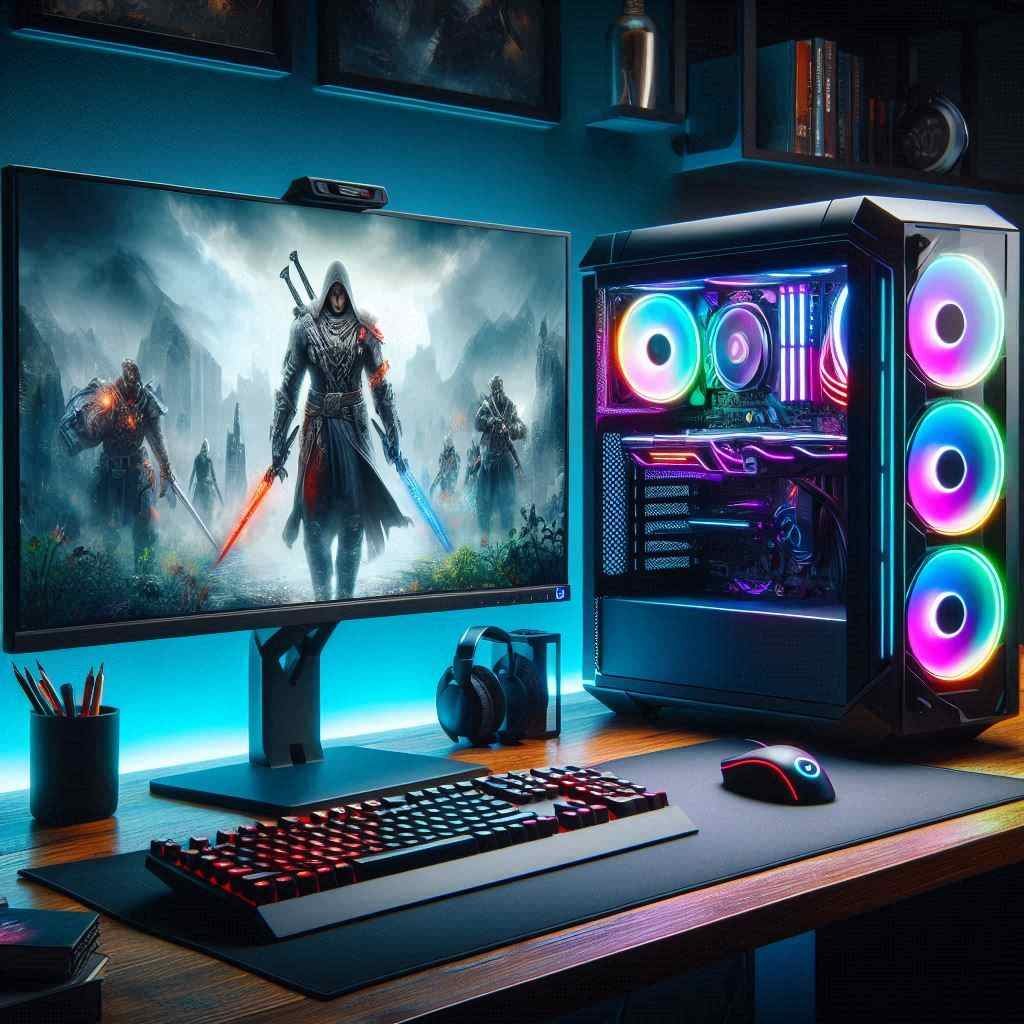As 2024 unfolds, the gaming landscape is becoming more immersive and graphically demanding than ever. For many gamers, the aspiration to experience the latest titles in their full glory often clashes with financial realities. However, assembling a budget gaming PC is a viable solution that balances performance and cost. This guide will walk you through the process of creating a high-performance, cost-effective gaming rig that can handle contemporary games without breaking the bank.
Setting a Budget
The journey to building a budget gaming PC begins with setting a realistic budget. The amount you allocate will largely influence the quality of your gaming experience. Casual gamers might find a budget of around $500 sufficient to handle most modern games at medium settings. On the other hand, competitive gamers aiming for higher frame rates and superior performance might need to set aside $800 to $1,000.
Prioritizing components based on your budget is crucial. In a budget build, the CPU and GPU will take up a significant portion of your budget, as they directly impact gaming performance. By allocating funds wisely, you ensure that each dollar spent contributes to enhancing your overall gaming experience.
Choosing Components for a Budget Gaming PC
CPU and GPU
The CPU and GPU are the heart of your gaming PC. For 2024, the AMD Ryzen 5 5600G and Intel Core i5-12400F are excellent choices for budget-conscious gamers. These processors deliver impressive performance for their price and are well-suited for gaming.
When it comes to GPUs, the NVIDIA GeForce GTX 1660 Super and AMD Radeon RX 6600 stand out. Both offer remarkable performance for 1080p gaming, balancing cost and capability effectively. These graphics cards will handle most modern games at high settings without straining your budget.
Motherboard
Choosing a motherboard that combines affordability with essential features is key. The MSI B550M Pro-VDH and ASUS Prime B460M-A are great options for budget builds. They support the latest CPUs, offer necessary connectivity options, and have solid build quality without unnecessary extras.
RAM
For a smooth gaming experience, 16GB of RAM is the sweet spot. This amount ensures both multitasking and gaming performance are well managed. Brands like Corsair and Crucial offer reliable and cost-effective RAM options. Opt for a DDR4-3200MHz kit, which provides a good balance of speed and affordability.
Storage
When it comes to storage, an SSD is essential for quick load times and overall system responsiveness. A 500GB SSD, such as the Western Digital Blue SN570, offers ample space for your operating system and a few games. If you need more storage, consider pairing it with a 1TB HDD like the Seagate Barracuda for additional space for less frequently accessed files.
Power Supply
A reliable power supply unit (PSU) is vital for the stability and longevity of your gaming PC. Look for units from reputable brands like EVGA, Corsair, or Seasonic. A 500W to 600W PSU with 80 Plus Bronze certification, such as the EVGA 600 W1, is a solid choice for most budget builds.
Case
The case is where all your components will be housed, so it should offer good airflow, cable management options, and ease of assembly. Budget-friendly options like the NZXT H510 and Cooler Master MasterBox Q300L provide excellent build quality and aesthetics without straining your budget.
Building Process
Assembling your budget gaming PC is a rewarding endeavor. Here’s a step-by-step guide to help you through the process:
- Prepare Your Workspace: Ensure you have a clean, static-free area. Gather all your components and tools.
- Install the CPU and RAM: Open the motherboard’s CPU socket, align the CPU correctly, and gently place it into the socket. Lock it in place and install the RAM sticks into the appropriate slots.
- Mount the Motherboard: Attach the motherboard to the case using the provided standoffs and screws.
- Install the PSU: Secure the power supply in the case and route the necessary power cables.
- Mount the Storage Devices: Install the SSD and HDD into their respective slots or bays.
- Install the GPU: Insert the graphics card into the PCIe slot on the motherboard and secure it with screws.
- Connect the Cables: Connect all power cables, data cables, and case front panel connectors to the motherboard.
- Power On and Test: Double-check all connections, power on your PC, and enter the BIOS to ensure all components are recognized.
Performance Testing and Optimization
Once your budget gaming PC is operational, it’s time to assess its performance. Utilize benchmarking tools like 3DMark and UserBenchmark to evaluate how well your system performs compared to similar builds. These tools provide valuable insights into your PC’s capabilities.
Optimizing your system involves updating drivers, tweaking in-game settings, and possibly overclocking your CPU and GPU for additional performance. Ensure your system has adequate cooling before attempting any overclocking.
Conclusion
Building a budget gaming PC in 2024 is both achievable and rewarding. By carefully selecting components and focusing on value, you can create a gaming rig that delivers impressive performance without a hefty price tag. Embrace the process with confidence, and enjoy the satisfaction of gaming on a system you built yourself. Welcome to the PC gaming community, where your dream setup is just a build away!


